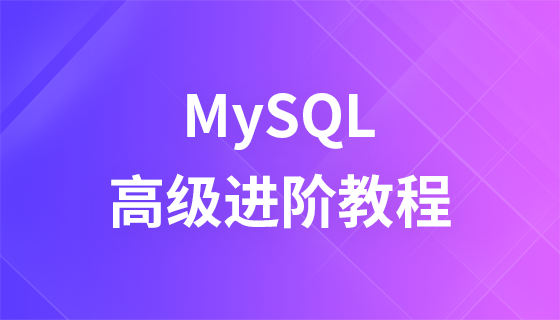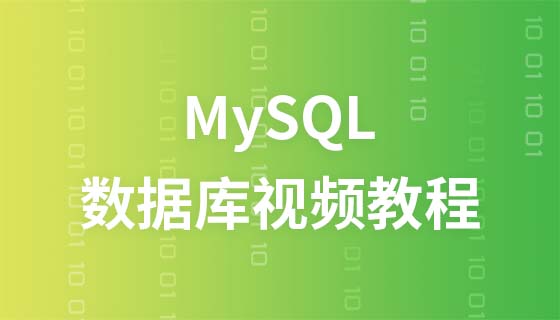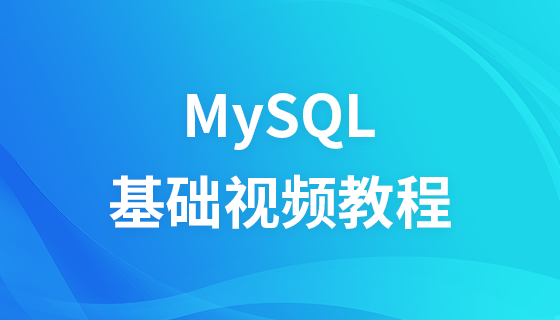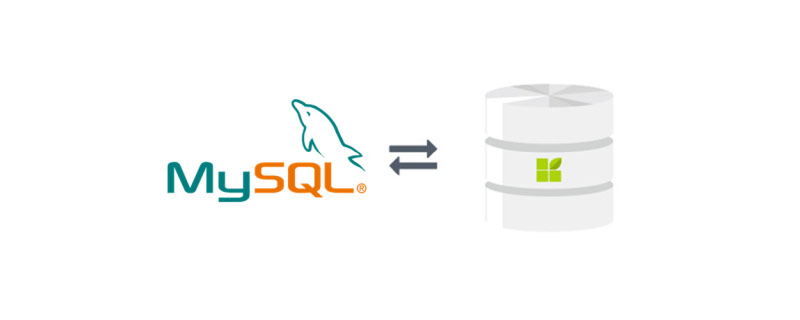
免费学习推荐:mysql教程(视频)
一、准备工作
1、安装MySQL数据库
Shell脚本一键部署——源码编译安装MySQL
2、实验准备,数据表配置
mysql -uroot -p
show databases;
create database train_ticket;
use train_ticket;
create table REGION(region varchar(10),site varchar(20));
create table FARE(site varchar(20),money int(10),date varchar(15));
desc REGION;
desc FARE;
insert into REGION values ('south','changsha');
insert into REGION values ('south','nanchang');
insert into REGION values ('north','beijing');
insert into REGION values ('north','tianjin');
insert into FARE values ('changsha',1000,'2021-01-30');
insert into FARE values ('nanchang',700,'2021-01-30');
insert into FARE values ('beijing',1500,'2021-01-30');
insert into FARE values ('tianjin',1200,'2021-01-30');
insert into FARE values ('beijing',2200,'2021-02-05');
select * from REGION;
select * from FARE;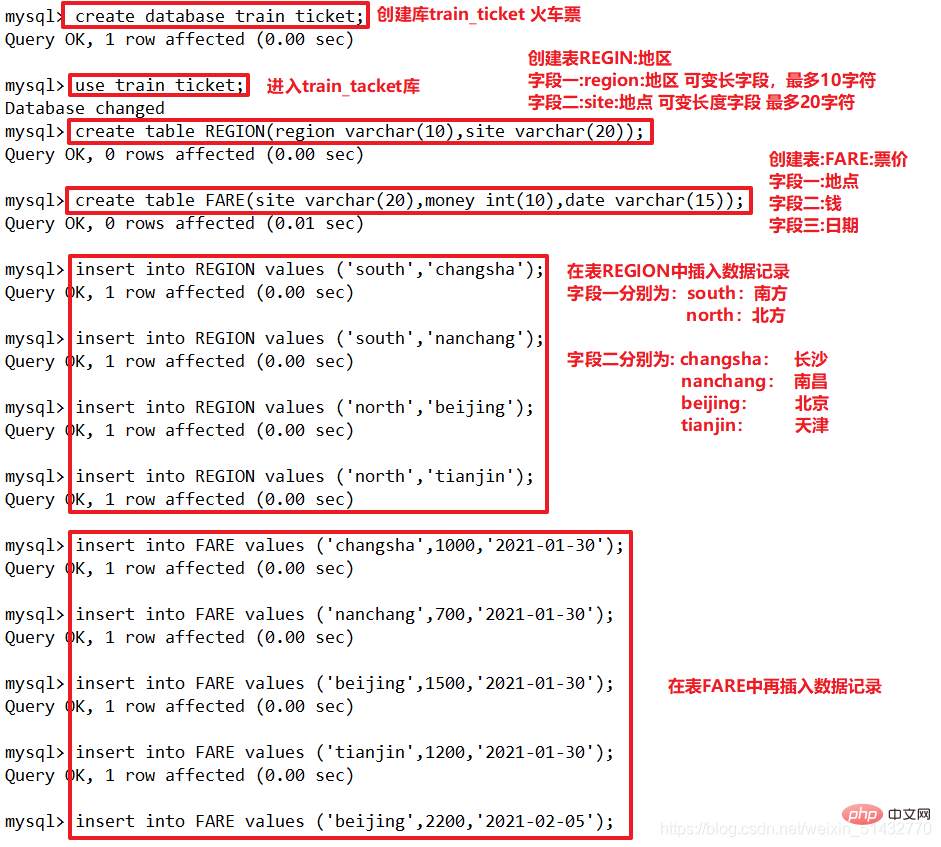
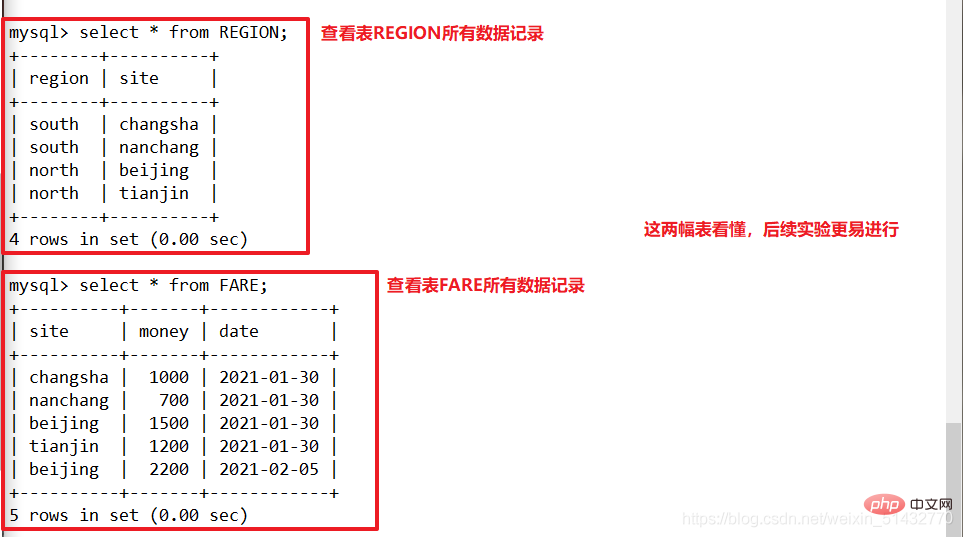
二、MySQL 高级(进阶) SQL 语句
1、SELECT
显示表格中一个或数个字段的所有资料
语法:SELECT 字段 FROM 表名
select region from REGION;
2、DISTINCT
不显示重复的资料(去重)
语法:SELECT DISTINCT 字段 FROM 表名
select distinct region from REGION;
3、WHERE
有条件查询
语法:SELECT 字段 FROM 表名 WHERE 条件
select site from FARE where money > 1000; select site from FARE where money < 1000; select site from FARE where money = 1000;
4、AND、OR
and(并且)、or(或者)
语法:SELECT 字段 FROM 表名 WHERE 条件1 ([AND|OR] 条件2)+;
select site from FARE where money > 1000 and (money < 1500); select site,money from FARE where money < 500 or (money < 1500 and money >= 700); select site,money,date from FARE where money >= 500 and (date < '2021-02-05' and money < 1000);
5、IN
显示已知的值的资料
语法:SELECT 字段 FROM 表名 WHERE 字段 IN (‘值1’,‘值2’,……);
select site,money from FARE where money in (700,1000);
6、BETWEEN
显示两个值范围内的资料
语法:SELECT 字段 FROM 表名 WHERE 字段 BETWEEN ‘值一’ and ‘值二’;
select * from FARE where money between 500 and 1000;
7、通配符、LIKE
通常通配符都是跟LIKE一起使用
%:百分号表示零个、一个或多个字符
_:下划线表示单个字符
LIKE:用于匹配模式来查找资料
语法:SELECT 字段 FROM 表名 WHERE 字段 LIKE ‘模式’;
select * from FARE where site like 'be%'; select site,money from FARE where site like '%jin_';
8、ORDER BY
按关键字排序
语法:SELECT 字段 FROM 表名 [WHERE 条件] ORDER BY 字段 [ASC,DESC];
#ASC:按照升序进行排序,默认的排序方式
#DESC:按照降序进行排序
select * from FARE order by money desc; select date,money from FARE order by money desc;
函数
1、数学函数
| abs(x) | 返回 x 的绝对值 |
|---|---|
| rand() | 返回 0 到 1 的随机数 |
| mod(x,y) | 返回 x 除以 y 以后的余数 |
| power(x,y) | 返回 x 的 y 次方 |
| round(x) | 返回离 x 最近的整数 |
| round(x,y) | 保留 x 的 y 位小数四舍五入后的值 |
| sqrt(x) | 返回 x 的平方根 |
| truncate(x,y) | 返回数字 x 截断为 y 位小数的值 |
| ceil(x) | 返回大于或等于 x 的最小整数 |
| floor(x) | 返回小于或等于 x 的最大整数 |
| greatest(x1,x2…) | 返回集合中最大的值 |
| least(x1,x2…) | 返回集合中最小的值 |
select abs(-1),rand(),mod(5,3),power(2,3),round (1.579),round(1.734,2);

select sqrt(9),truncate(1.234,2),ceil(1.2),floor(1.9),greatest(1,2,3,4),least(1,2,3,4);

2、聚合函数
| avg() | 返回指定列的平均值 |
|---|---|
| count() | 返回指定列中非 NULL 值的个数 |
| min() | 返回指定列的最小值 |
| max() | 返回指定列的最大值 |
| sum(x) | 返回指定列的所有值之和 |
select avg(money) from FARE; select count(money) from FARE; select min(money) from FARE; select max(money) from FARE; select sum(money) from FARE;
#count(*)包括所有列的行数,在统计结果时,不好忽略值为null
#count(字段)只包括那一行的列数,在统计结果的时候,会忽略列值为null的值
3、字符串函数
| trim() | 返回去除指定格式的值 |
|---|---|
| concat(x,y) | 将提供的参数 x 和 y 拼接成一个字符串 |
| substr(x,y) | 获取从字符串 x 中的第 y 个位置开始的字符串,跟substring()函数作用相同 |
| substr(x,y,z) | 获取从字符串 x 中的第 y 个位置开始长度为 z 的字符串 |
| length(x) | 返回字符串 x 的长度 |
| replace(x,y,z) | 将字符串 z 替代字符串 x 中的字符串 y |
| upper(x) | 将字符串 x 的所有字母变成大写字母 |
| lower(x) | 将字符串 x 的所有字母变成小写字母 |
| left(x,y) | 返回字符串 x 的前 y 个字符 |
| right(x,y) | 返回字符串 x 的后 y 个字符 |
| repeat(x,y) | 将字符串 x 重复 y 次 |
| space(x) | 返回 x 个空格 |
| strcmp(x,y) | 比较 x 和 y,返回的值可以为-1,0,1 |
| reverse(x) | 将字符串 x 反转 |
SELECT TRIM ([ [位置] [要移除的字符串] FROM ] 字符串);
#[位置]:的值可以为 LEADING (起头), TRAILING (结尾), BOTH (起头及结尾)。
#[要移除的字符串]:从字串的起头、结尾,或起头及结尾移除的字符串。缺省时为空格。
select trim(leading 'na' from 'nanchang'); select trim(trailing '--' from 'nanchang--'); select trim(both '--' from '--nanchang--'); select concat(region,site) from REGION where region = 'south'; select concat(region,' ',site) from REGION where region = 'south'; select substr(money,1,2) from FARE; select length(site) from FARE; select replace(site,'ji','--') from FARE; select upper(site) from FARE; select lower('HAHAHA'); select left(site,2) from FARE; select right(site,3) from FARE; select repeat(site,2) from FARE; select space(2); select strcmp(100,200); select reverse(site) from FARE;
4、| | 连接符
如果sql_mode开启开启了PIPES_AS_CONCAT,"||"视为字符串的连接操作符而非或运算符,和字符串的拼接函数Concat相类似,这和Oracle数据库使用方法一样的
mysql -uroot -p use train_ticket; select region || ' ' || site from REGION where region = 'north'; select site || ' ' || money || ' ' || date from FARE;
5、GROUP BY
BY后面的栏位的查询结果进行汇总分组,通常是结合聚合函数一起使用的
GROUP BY 有一个原则,就是 SELECT 后面的所有列中,没有使用聚合函数的列,必须出现在GROUP BY后面。
语法:SELECT 字段1,SUM(字段2) FROM 表名 GROUP BY 字段1;
select site,sum(money) from FARE group by site; select site,sum(money),date from FARE group by site order by money desc; select site,count(money),sum(money),date from FARE group by site order by money desc;
6、HAVING
用来过滤由GROUP BY语句返回的记录集,通常与GROUP BY语句联合使用。
HAVING语句的存在弥补了WHERE关键字不能与聚合函数联合使用的不足。如果被SELECT的只有函数栏,那就不需要GROUP BY子句。
语法:SELECT 字段1,SUM(字段2) FROM 表名 GROUP BY 字段1 HAVING(函数条件);
select site,count(money),sum(money),date from FARE group by site having sum(money) >=700;
7、别名
字段别名、表格别名
语法:SELECT “表格別名”.“字段1” [AS] “字段1別名” FROM “表格名” [AS] “表格別名”;
select RE.region AS reg, count(site) from REGION AS RE group by reg; select FA.site AS si,sum(money),count(money),date AS da from FARE AS FA group by si;
8、子查询
连接表格,在WHERE 子句或HAVING 子句中插入另一个SQL 语句
语法:SELECT 字段1 FROM 表格1 WHERE 字段2 [比较运算符] (SELECT 字段1 FROM 表格2 WHERE 条件)
可以是符号的运算符
例:=、>、<、>=、<=
也可以是文字的运算符
例:LIKE、IN、BETWEEN
select A.site,region from REGION AS A where A.site in(select B.site from FARE AS B where money<2000); select B.site,money,date from FARE AS B where site in(select A.site from REGION AS A where region = 'north');
相关免费推荐:SQL教程
以上是介绍高级进阶的MySQL数据库SQL语句的详细内容。更多信息请关注PHP中文网其他相关文章!
